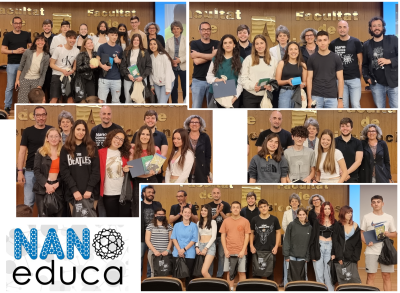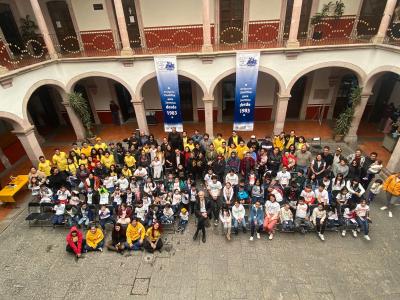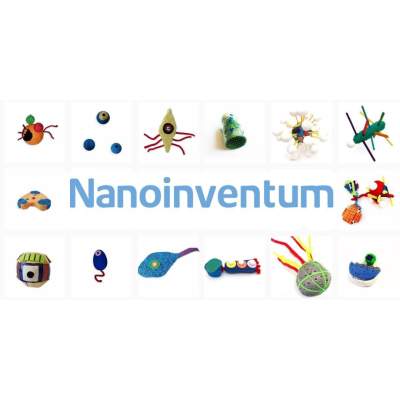
International Nano Efforts
There have been a number of international groups who have taken digital resources from the NISE Network’s NanoDays kits and done their own remarkably big things with the science of the super small. For example, NanoDays at the 2015 International Beijing Science Festival and NanoPiccola - a junior academy established in Italy to educate and inspire youth in nanoscience. Among these exemplary programs showing what is possible with great passion and partnership is Nanoinventum in Spain and Grupo Quark (Quark Group) in Mexico.
Nanoinventum in Spain
Nanoinventum, a scientific co-creation project, initiated in Spain with the goal to help primary school students see science as something that is tangible and fun, encouraging scientific vocations as well as creativity from an early age. Within this co-creation project is a program called NanoEduca. Designed to introduce nanoscience and nanotechnology to students and teachers in a primary school setting, NanoEduca includes curriculum and physical resources that empower participants to experiment with nanoscience and discuss the possible future implications of nanotechnology.
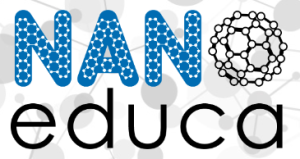
NanoInventum is organized by the Scientific and Technological Centers of the University of Barcelona (CCiTUB) in collaboration with the Centre for Specific Pedagogical Resources in Support of Innovation and Educational Research (CESIRE) of the Department of Education of the Generalitat of Catalonia. As the project has evolved, additional collaborators include the Institute of Nanoscience and Nanotechnology of the UB (IN2UB), the Institute of Bioengineering of Catalonia (IBEC), and the Spanish Carbon group (GEC). The project has also gained financial support from the Spanish Foundation for Science and Technology (FECYT) and the company BASF. NanoEduca is organized by the University of Barcelona (CCiTUB/IN2UB/ICE) the Catalan Institute of Nanoscience and Nanotechnology (ICN2), the Autonomous University of Barcelona (UAB), the Catalan Society of Nanoscience and Nanotechnology (SOCNANO) and CESIRE (watch the Nanoinventum about video in Spanish, learn more, and connect with the project: http://nanoinventum.blogspot.com/p/inicio.html).
Quark Group in Mexico
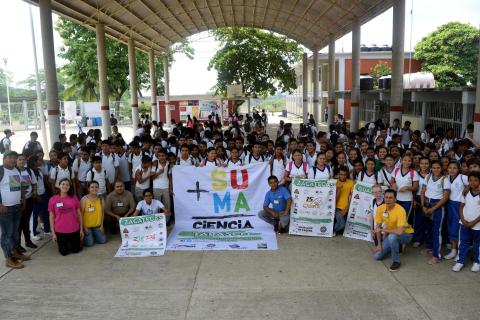
In Mexico, the Science Museum at the Autonomous University of Zacatecas, in collaboration with the Grupo Quark (Quark Group), used several activities in the NanoDays Kits to bring children and youngsters closer to nanotechnologies. This work was performed at science workshops developed at schools, special events and the Children's Science Club, an informal science education program established by the Museum in 1990. These efforts reinforced a previous experience creating activities to discuss quantum physics, inspiring the group to design new activities to communicate nanotechnologies and nanoscience content to the public. As a result, and with the collaboration of several international agents, in 2016 the Museum and Quark published the book "Para jugar con las Nano: ciencia y tecnologías" (To play with Nano: science and technologies), which is a part of a collection that shares ideas and instructions to develop science recreation activities in different contexts.
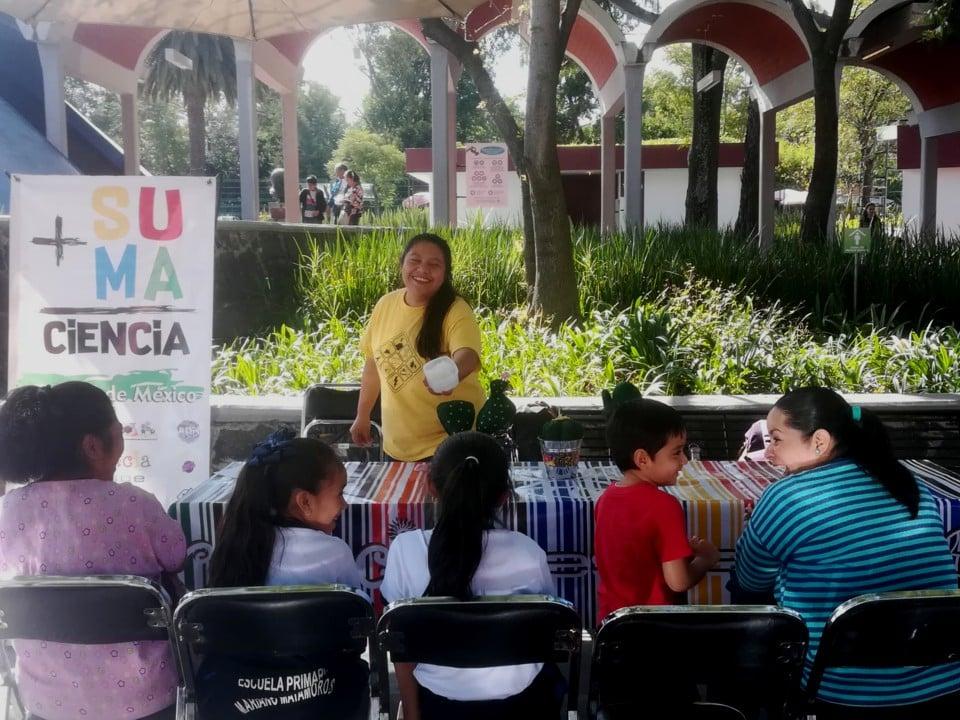
In the same year, drawing inspiration from the NISE Network, Grupo Quark promoted the creation of "Recreación en Cadena," the Mexican network of science recreation groups. This nation-wide collaboration intends to professionalize the work of groups dedicated to informal science activities through training opportunities and academic debate. It also has worked towards developing science outreach activities on a regular basis in public spaces. "Suma Ciencia" (Add Science) is a program that every two months takes science into streets and parks all over Mexico to show people that science can be everywhere and serve us in all aspects of our lives. Each "Suma Ciencia" event has a different theme, but many of them have included Nano-related issues.
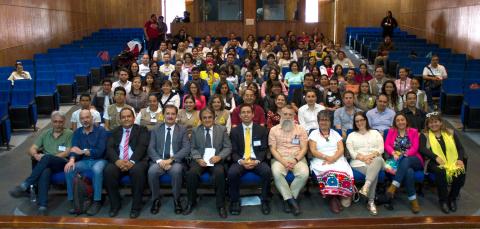
Two forces behind these projects are Dr. Jordi Diaz-Marcos at the University of Barcelona and Dr. Miguel Garcia Guerrero, coordinator of the Grupo Quark and new executive director of the Latin American Network for Science Popularization. Both were inspired by the work of the NISE Network to develop their own local programming. "The NISE Network was the starting point for all our projects. I was very excited when I met you” said Dr. Diaz-Marcos, who was first introduced to the NISE Network during a research visit at Cornell University’s NanoScale Facility. Dr. Diaz-Marcos and Dr. García-Guerrero spoke with NISE Network core team members Catherine McCarthy and Kevin Dilley, who both previously worked at the Sciencenter in Ithaca, NY and regularly collaborated with Cornell for NanoDays events. Dr. Diaz-Marcos and Dr. García-Guerrero talk about being inspired by how engaged participants were with the NanoDays activities, especially the Sciencenter’s young audiences. He had to learn more about the NanoDays resources and the origins of the NISE Network.
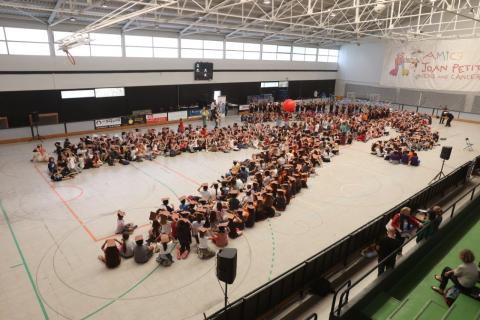
“It was really interesting how the NISE Network mobilized lots of people with NanoDays” tells García-Guerrero “For several years we had worked with different organizations, doing science workshops, but we lacked formality. Using the NISE Network resources, we built our own network with public outreach and activities that give everyone a sense of belonging.” Built a network they have indeed. “More than 100,000 people were involved in the making of our activities, as The Festival 10ALAMENOS9, and educational products such as NanoInventum and NanoEduca'' says Dr. Diaz-Marcos, describing the very collaborative process primarily involving the Scientific and Technological Centers of the University of Barcelona (CCiTUB) and more than 60 Iberoamerican centers.
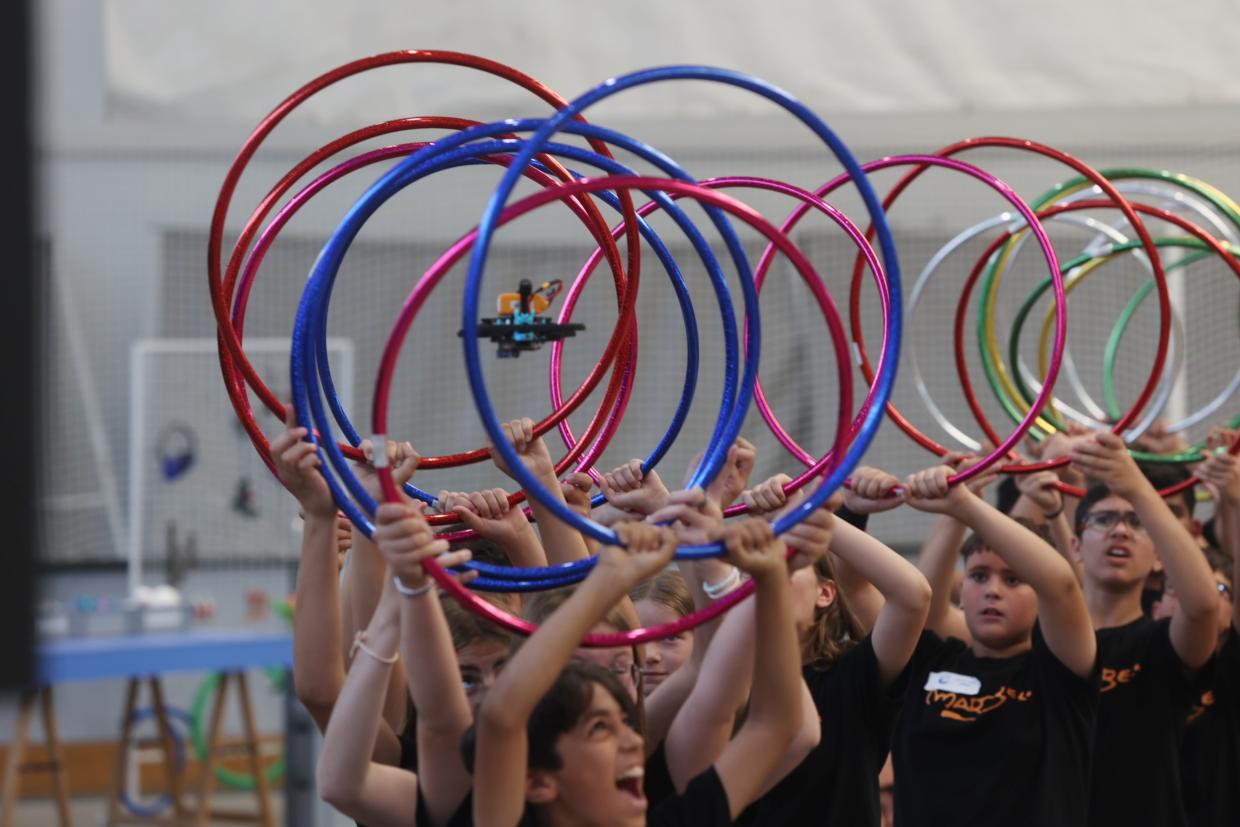
Dr. Diaz-Marcos and his colleagues at the University of Barcelona started by taking ideas from the NanoDays framework in the U.S. He admired the NISE Network’s philosophy of creating materials and sharing them with everyone, ultimately using the same model of open source materials with NanoEduca and NanoInventum resources. He also appreciated that all public-facing NISE Network nanoscience resources had been translated into Spanish. From here he and his team adapted the NISE Network materials and developed their own resources, including hands-on activities, experiments, and much more, that make clear connections between the concepts of nanoscience and nanotechnology and current curriculum being taught in schools.
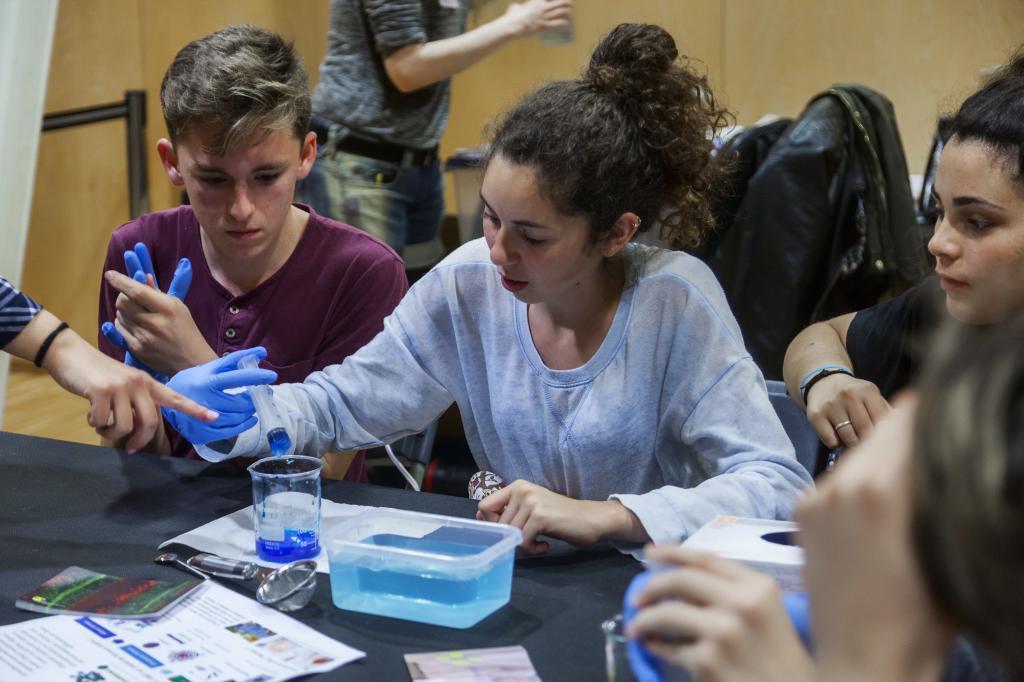
The NanoEduca program are designed to introduce nanoscience and nanotechnology to students and teachers of secondary school (ages 14 to 18) by giving them the tools to understand the concepts of nanoscience and resources to facilitate discussion of possible future implications of nanotechnology. There are teacher training sessions as well as an online library of NanoEduca Training Videos to support the project’s educational resources, and yes, this includes a physical NanoKit. The NanoEduca kit contains different experiments that exemplify the key points of the project. In contrast, NanoInventum is designed for primary school (ages 9 to 12) but also includes teacher training sessions, videos and a Nanokit call NanoExplora. Activities use facts and fun to make strong connections between the science concepts and possible applications. The approach has proven successful in facilitating a greater understanding of the content as well as the various access points to careers in the field.
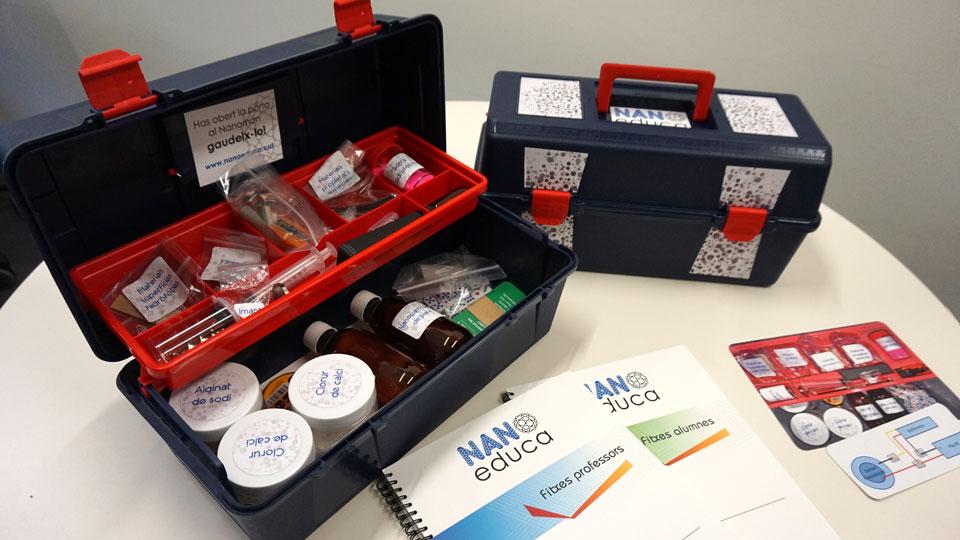
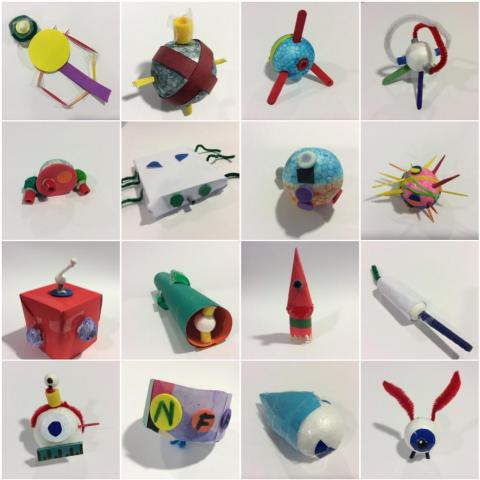
This is not the only product of the Nanoinventum project. Another big part of the initiative is the Nanorobots Workshop, carried out within the framework of the Nanoscience and Nanotechnology Festival 10ALAMENOS9 (remember, a nanometer is one billionth of a meter; 10-9, “10 to the minus 9”). The Festival, much like NanoDays in the US, is an exciting celebration of the importance and impact made by the science of the small. Held during April and on October 9th each year in different cities in Spain and some Ibero-American cities, the Festival includes everything from science shows to Nanodialoges to opportunities to see real research happening in laboratories to workshops and competitions, including the Nanorobot workshops.
During the Nanorobot workshop, primary school students are introduced to the basic concepts of nanoscience, what a nanorobot is and how it works. Discussion is taken further to inspire students’ critical thinking about the risks and benefits of nanotechnology on society. In small groups, students then develop a nanorobot that can solve a current problem in our daily lives. Students start by presenting a drawing or model made with recycled materials, along with a brief proposal about the purpose the nanorobot will serve. Groups get the chance to exchange ideas with their peers as well as receive feedback from real researchers in the community who participate in the event. From here, roles are assigned within groups (production, communication, etc.) and the building of each groups’ nanorobot commences. Students often design their nanorobots to address medical or environmental issues, but the learning process always includes exploration in reasoning, relationships, and play (watch a video in Spanish about the 2023 NanoInventum Fair).
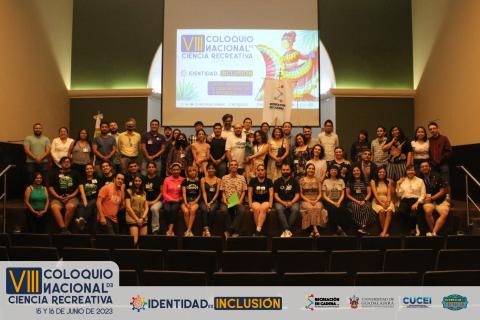
So what more could possibly be on the horizon for this co-collaboration? This past summer, the 8th Annual Colloquium on Science and Creation, organized by "Recreación en Cadena," was held in Guadalajara, Mexico, where the NanoDays concept of mobilizing people to enjoy science in public spaces was brought to the conversation. “There is a need to help train and connect teachers throughout Mexico to STEM content and a desire to create groups that model this collaboration and support work in various Mexican states” tells Dr. Garcia-Guerrero. There is also the continued focus on engaging both children and parents. “Children react differently when parents are also involved but parents are often afraid to show kids they don’t know something. If we knew everything there would be no need for science. Science begins when you realize you don’t know something. Play and research, together we make discoveries.” In addition, Dr. Diaz-Marcos would like to expand the program into other public spaces while also trying to reach new audiences. This includes senior communities, having heard “You’re always working with kids, you should come work with us!” from this community. There are also plans for future work with the Catalan Association for the Promotion of Accessibility (ACPA), a non-profit focused on users, professionals and researchers of accessibility and ways to guarantee the full participation of everyone in society, to produce a kit focused on blind audiences.
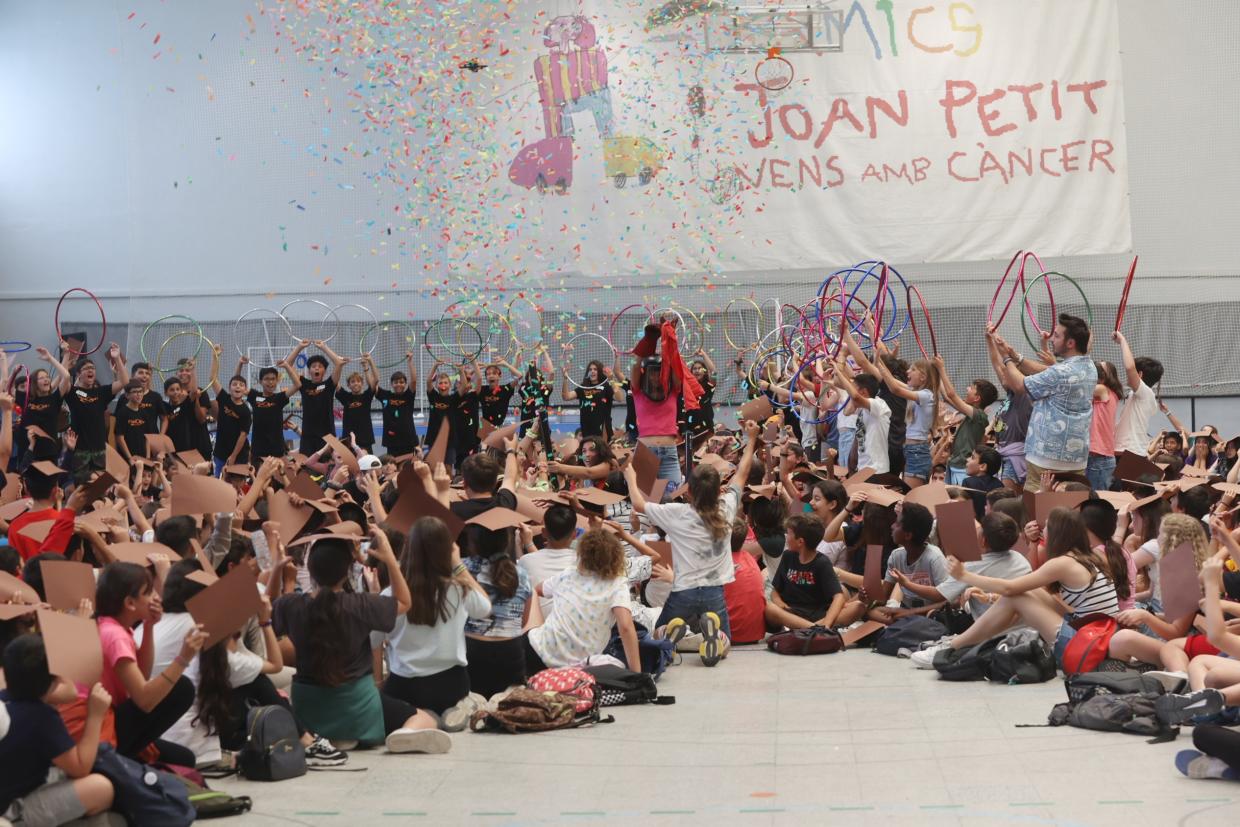
The NISE Network would like to thank all those involved in this incredible endeavor. We appreciate the work you have put in to build, maintain, and sustain a large network, as well as the commitments necessary for a co-collaboration with your community that can produce resources of this quality and scale. Thank you and cheers to the very promising future of this work!
